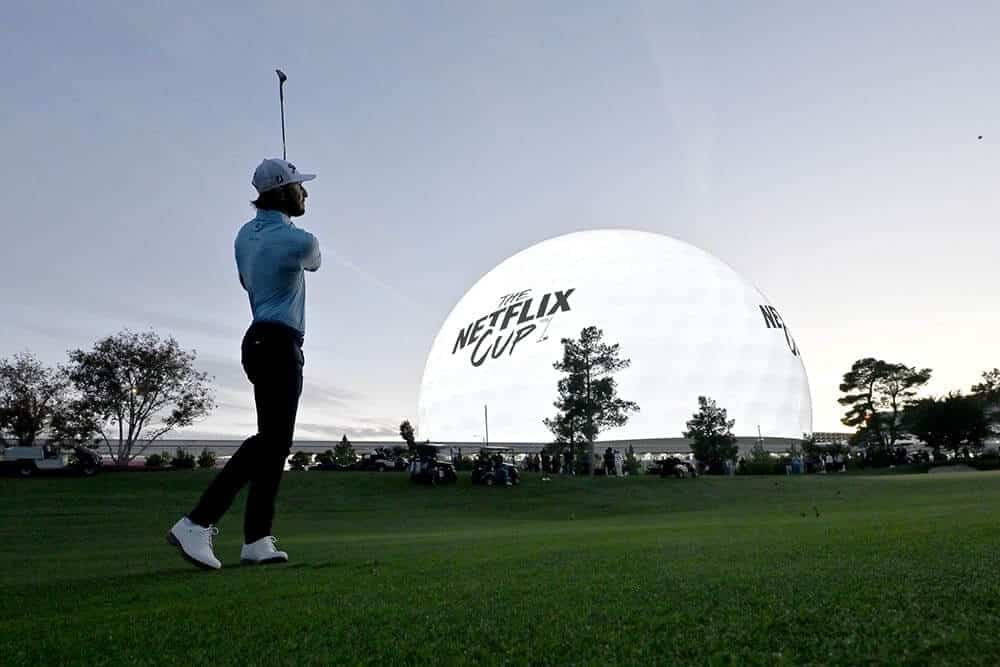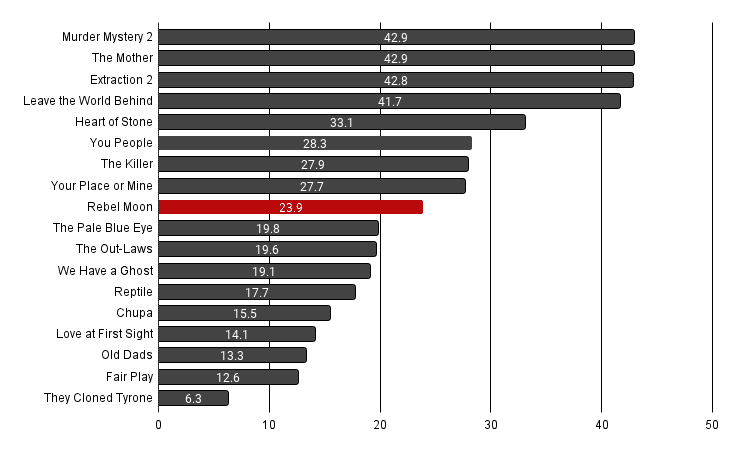
Picture: Adobe Stock
What a year it has been for the world of streaming and the entertainment industry at large!
With the biggest strikes in Hollywood history, entire companies undergoing tremendous shifts, and a multitude of other trends, it has indeed been an interesting year. What have been Netflix’s strengths and weaknesses over the past year?
Here are our hot takes on the good, the bad, and the ugly.
The Good: Licensing is Back
When Netflix first began its streaming service, its entire library consisted of licensed titles from Hollywood studios and TV show and movie owners. Since 2013, Netflix has heavily invested in its own roster of shows and movies. The total number of unique titles in its Original library recently reached 4,000, representing over 55% of the total US library.
The reason for this heavy investment is that there were early signs competitors of Netflix would begin to cut off licensing. Bob Iger of Disney famously reversed his position on licensing to Netflix, moving from a first-window deal for all their theatrical output from 2016-2019 to compare the sharing of their content to handing nukes to the enemy, thereby cutting off the supply.

Band of Brothers was among the licensed titles from HBO to hit Netflix this year.
Like many companies, the reality of their declining legacy businesses and the need to scale their streaming services globally has led to a shortage of cash. This year, we’ve seen more content than ever being licensed to Netflix. Some huge series from the past few decades have been added or re-added. Warner Bros. Pictures is licensing newer movies to Netflix, and for the first time in history, HBO has given Netflix some of its shows.
The picture expands globally as well. Every region has been acquiring more movies and series over the past year. Based on what we know so far about 2024, this trend is expected to continue, with Disney already announcing it will license over a dozen shows in the US, and other deals with various providers are expected to continue.
The Good: Data Transparency
Over the past few years, Netflix has been the leader when it comes to giving out data for viewership on its shows. Spurred on from improved metrics from the likes of Nielsen and other third-party companies, Netflix has been releasing daily top 10s for the past three years now and top 40 figures for the past two.
This year, they took two steps forward.
Firstly, in the summer, Netflix adopted a metric we’ve been using heavily over the past few years: CVE or Completed Viewing Equivalents. This metric takes into account the runtime of a show or movie and uses that against the hours viewed to provide a rough figure of how many people watched a title. It’s by no means perfect, but it’s the best way to provide an apples-to-apples comparison.
For example, this graph we recently used for opening weekend numbers for Netflix movies in 2023. There you can see the different tiers of movie viewership that you can expect. At the top, you’ve got the big-budget top performers, then the middling movies, and everything else.
Later in the year, Netflix provided its first-ever engagement report that revealed hours watched data for thousands of shows and movies on Netflix covering the first six months of 2023. That report has proved valuable for some creators and stakeholders in a show or movie, with this being the first time they’ve gotten insight into performance. More broadly, what you can pull from this new data is up for debate.
For some, divulging this information will never be enough to satisfy their data needs. However, given how far ahead Netflix is compared to its competition, they’re still the leader, and we welcome any additional data dumps in 2024.
The Good: Pulling the Trigger on Renewals/Cancellations and Miniseries Labeling
One common critique of Netflix is that it cancels everything. However, data suggests this isn’t entirely fair, with Netflix reportedly having a better cancellation rate than some of its rivals. In 2023, Netflix made a concerted effort to correctly label its shows in advance, identifying them as limited series or miniseries and showing more confidence in early renewals or providing timely updates on their future.
This shift could be due to the strike or the trend of Netflix shows being designed as limited series. Regardless, this year marked the first time we’re not ending it with dozens of shows’ fates up in the air. The conviction in early renewals might also be influenced by viewership decay in shows returning after two years, as seen in Shadow and Bone.
The Good: Netflix TUDUM and Geeked Week
No, we’re not giving praise to the Netflix TUDUM website here – I still believe that site is more detrimental to Netflix’s press strategy than good – we’re praising the two events Netflix held this year that showcased their upcoming lineup of shows and movies.
The biggest of the two events came in the Summer, showcasing a wide selection of content from around the world for what would be coming up for the remainder of 2023 and into 2024. Although the clapping was annoying, the event was great to attend in person, from what we’ve heard from numerous people who went. The livestream itself had a good mix of what shows and movies they picked to showcase and plenty of fan interaction. It’s not quite up there in terms of being similar to Star Wars Celebration or Disney’s D23, but they’re getting close.

TUDUM 2023: A Global Fan Event. Cr. Vans Bumbeers / Netflix © 2023
Geeked Week, which at one stage of the year looked like it wouldn’t even happen, came back in late 2023 and was a much better package than prior years. Although most of the big announcements got leaked (they gave nearly every press outlet all the content on the Friday before Geeked Week started with too many bigger outlets handing the embargoes to ALL their staff – I’ll leave it at that) the event was much better than prior years as it stuck to the content in much leaner showcases. There was still some stomach-churning commentary from the hosts, but overall, it was a good showcase.
The Bad: Split Season Releases
2023 saw Netflix embrace split-season releases. After years of sticking to releasing, Netflix experimented with dividing some of its biggest shows into two parts. This year shows like The Witcher and The Lincoln Lawyer underwent this split release, and with Bridgerton announced to follow suit in 2024, this trend seems set to continue.
While measuring the impact of these split releases from Netflix’s data is challenging, insights from Google Trends suggest they might be more about filling programming gaps. It would be interesting to see the general consensus on these split-season releases from the viewing public or the data on why Netflix keeps leaning into them for their bigger titles, but for me, at least, they seem to be more bad than good.
The Ugly: Live Streaming and Sports
Netflix launched live streaming in 2023, offering live events like a comedy special from Chris Rock, the technical disaster that was a Love is Blind Reunion Special, and The Netflix Cup. Each stream had its own issues, and they weren’t bad attempts, but given the competition level from rivals like Prime Video, who have been doing this for years, Netflix has not hit the ground running.
The issues for the streams came on multiple fronts. In the case of The Netflix Cup, the content on offer was ultimately messy and lackluster, while others clearly had viewership issues, discoverability problems, and technical difficulties. Most of these issues were especially evident in The Netflix Cup.

Photo by David Becker/Getty Images for Netflix © 2023
Regarding sports, Netflix’s tentative approach to sports programming has been cautious. Despite rumors of negotiations for major sports rights, the general view is that Netflix isn’t fully committed to sports yet. Hopefully, their live offerings in 2024, which include the Annual Screen Actors Guild Awards and The Netflix Slam, will showcase a more in-depth lineup.
The Ugly: The Strikes
The strikes posed significant challenges for Netflix. In the PR arena and probably overall, they may have come out ahead, avoiding the missteps of Disney and Warner Bros. Discovery’s CEOs. This was mainly because Netflix’s top brass stayed out of the spotlight except for necessary statements that didn’t cause too much controversy.
You could argue Netflix possibly weathered the strike better due to its licensing strategy, a more robust pipeline, and a focus on international titles. Nevertheless, the strikes impacted Netflix’s output and development and lasted much longer than anyone wanted. The slowdown will be more evident next year, especially in the summer, as many shows like Bridgerton season 3, initially slated for a Q4 2023 release, are now being spread out. Titles in development were impacted, too, with numerous projects we’ve heard being cut in early development or getting ready for a greenlight.
The strikes hurt shows that were in development and will undoubtedly hurt any returning shows. As we’ve documented with Netflix titles like Shadow & Bone and Sweet Home more recently, shows coming back 2-3 years after their initial debut hurt their viewing performance. Thankfully, it does look as though returning shows are being prioritized when it comes to filming starts.
Now, to round out on a bit of a personal note for us here at What’s on Netflix. This is our 10th year covering Netflix (albeit not very well in the early days and arguably even today!), and it’s been a challenging year for us. Changes with Google are part and parcel with running an online blog, and their recent updates have been particularly hard on us and other niche blogs.
Those challenges are harder when we’re competing with Netflix directly in the form of TUDUM too. As a partial result, our relationship with Netflix is also a struggle at the moment. I won’t go into too much detail here, but we’ve found working with particular teams increasingly difficult over the last two years, particularly the last six months.
We’ll be back in the coming weeks with a 2023 in-review article where we’ll take a look into Netflix by the numbers. You can revisit our 2022 Netflix by the numbers article here.
That’s our review of Netflix in 2023 – how do you rate Netflix’s performance this year? Let us know in the comments.





